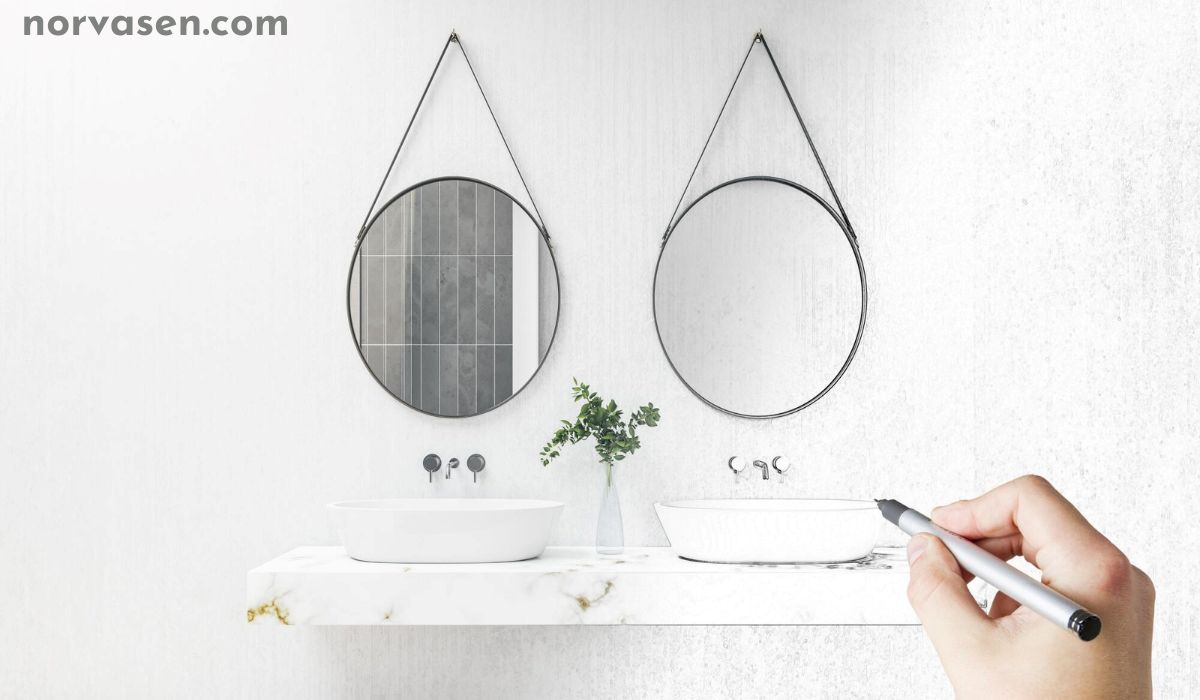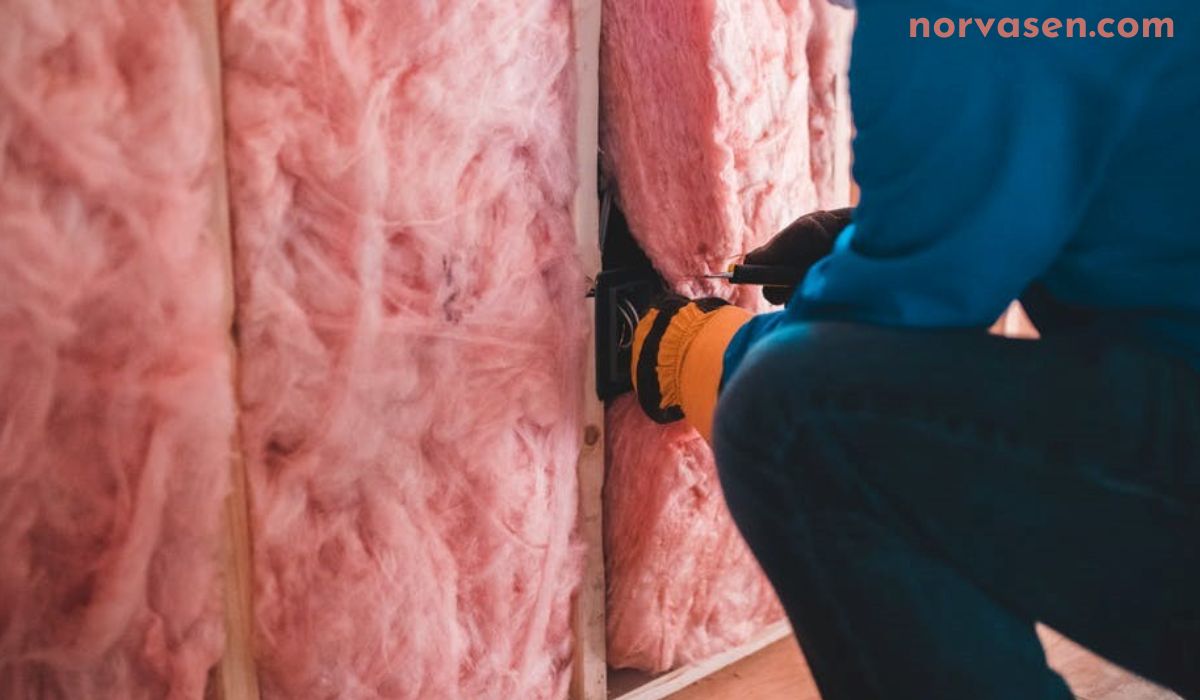Home Improvement
Dinosaur Wallpaper for Kids Room

Dinosaur wallpaper for wall — those towering, scaly titans that once roamed our prehistoric landscapes. What better way to ignite a child’s wonder than surrounding them with vivid wallcovering visions of those ancient behemoths?
But choosing the perfect dinosaur wall mural isn’t as simple as plucking the first T-Rex print off the rack. We mustn’t be mere cave-dwellers when it comes to this critical interior decision. Allow me to share some insightful wisdom to ensure your kiddo’s new Jurassic-inspired sanctuary hits on all cylinders.
Key Features
- Eco-friendly and health-conscious materials should be the bedrock. Those rambunctious little ones will be brushing up against these walls daily, so we want zero toxins or harsh off-gassing. Seek out wallcoverings made from natural, breathable materials like sustainable woods, grasses, or recycled content.
Definitely avoid vinyls or anything with heavy metal content.
Many traditional vinyl wallcoverings did contain concerning levels of heavy metal stabilizers and phthalate plasticizers. However, the industry has made great strides in developing safer, eco-friendly vinyl alternatives that are free of those hazardous components. Look specifically for vinyl products labeled as “non-toxic”, “phthalate-free”, or featuring bio-based plasticizers. Reputable children’s brands will make this clear.
- Application ease is also crucial unless you plan on hiring a professional crew of velociraptor-wranglers for the install. Look for modern “paste the wall” materials that make the process cleaner and quicker. Or even explore the new wave of removable, repositionable wallpapers that are basically idiot-proof.
- Durability is certainly paramount for any high-traffic area like a kid’s room. You’ll want fiberglass composites, or fabrics specially engineered for extreme abuse resistance. These can shrug off crayons, plasticine fossils, and even the occasional triceraptor head-butt without marring.
- In terms of the visuals themselves, I’d recommend avoiding any photorealistic scenes that could potentially frighten young minds. Whimsical, stylized illustrated depictions of our prehistoric pals are the way to go. Maybe colorful line-art renderings that capture their majesty without being too intense.
That said, you could incorporate some subtle educational elements amidst the whimsy. Perhaps border trims featuring dinosaur skeletons or footprint trails, imparting some low-key paleontology lessons. Or backgrounds layered with prehistoric flora and geographic terrain details.
Finally, let’s get that little imaginative noggin firing on all pistons by incorporating interactive elements directly onto the walls. Removable decals could depict explorers of time travelers encountering the dinosaurs. Or maybe life-sized dinosaur outlines they can color in themselves, updating their own personal mural over time.
Design and Styles
As for the aesthetic direction, I’d recommend leaning into more stylized, almost cartoonish illustrated depictions over photorealistic scenes. Those can come across a bit too intense or scary for young minds. Whimsical renderings with slightly exaggerated, friendly features tend to go over best. Think along the lines of the artwork in classic dino books or movies aimed at kids.
Color Palette
For the overall color palette, you want to avoid anything too aggressive or overstimulating. Earthy tones like warm browns, sunny oranges, and olive greens can create a naturalistic backdrop reminiscent of the prehistoric landscapes. Then layer in pops of cheerful brights like sunny yellows, vibrant blues, and lively purples for the dinosaur characters themselves.
This allows you to highlight their favorite species in vivid hues while keeping the overall vibe serene and balanced. For example, a muted sandstone background with pops of teal for that beloved brachiosaurus. The surroundings shouldn’t fight for attention.
Existing Room Design
In terms of unifying it with the existing room aesthetic, most wallpaper collections will offer complementary borders, ceiling trails, and even removable decals you can use to extend the theme. Framing the main mural with a coordinating dino footprint border, for instance. This helps create a cohesive, immersive environment.
Decals
Many companies also offer customization options to truly make it unique. You can often work with their artists to incorporate specific elements, edit colorways, or even have entirely bespoke designs created. Maybe blending those favorite dinosaurs with illustrations of your child’s other interests or stuffed animal friends.
Textural elements are also worth exploring to amplify the multi-sensory experience. Some premium wallcoverings will have raised inks, embossed details, or even integrated sculpted elements like trees or fossils that create incredible depth and dimension.
Installation Instructions for Kids Room
Installing wallpaper in a child’s room does involve some unique considerations beyond typical adult spaces. But have no fear, together we can ensure a fun, mess-free experience that maybe even gets your little one constructively involved.
First off, the installation process itself doesn’t fundamentally differ for kid-centric wallcoverings. You’ll still want to properly prep and size the walls, carefully measure and match patterns, use the recommended adhesive, etc. All the standard best practices apply.
That said, I would definitely recommend sticking to the newer generation of removable, renter-friendly wallpapers for a child’s room. These peel-and-stick varieties go up easily without water-based pastes that can get messy. And they can be cleanly removed or repositioned down the road as needs change. Perfect for evolving tastes and growth spurts!
Many of the top kid-focused wallpaper brands have shifted to these low-moisture adhesives printed on durable, washable vinyls. Germs and stains just wipe right off without damaging the graphics below. Such a smart move for high-traffic lil’ human environments!
Get your kiddo involved in the wallpapering
As for involving your kiddo in the installation fun, I’d advise waiting until they’re around 5 or 6 years old at the minimum. Any younger and you’ll likely have more chaos than productive assistance. But hit that kindergarten age and suddenly they’re packing the dexterity and short-burst focus to really get their hands delightfully mucky!
You could have them help with simple tasks like penciling up guidelines, or even doing some of the easier peeling/sticking of those renter-friendly panels. Just be prepared for the inevitable wandering attention spans and snack breaks.
To keep things engaging, turn it into an exploratory lesson! Study the dinosaur illustrations together and challenge them to identify the species. Or measure out dimensions and practice their numbers skills. Heck, turn it into a full-on dino museum install complete with guided tours!
Just set very clear sections or tasks for them to “own” under your watchful supervision. Maybe put down cheap drop cloths and even let them get a bit messy for once. I guarantee that sense of accomplishment and making their mark will have them cherishing those walls for years.
And who knows, you may just unearth a budding paleontologist or museum curator in the process! Even if it devolves into miniature crayon sketches alongside the pro panels, those accidental additions will only make the finished product that much more priceless.
So don’t be afraid to really lean into the dino delight and let your kiddo’s natural sense of wonder intermingle with your own inner child.
So in summary: eco-friendly and low-VOC materials, reasonably straightforward installation, rugged durability, age-appropriate visuals balancing whimsy with education, and chances for hands-on creative expression directly on their prehistoric canvas. Check all those boxes and you’ll have one stoked little paleontologist on your hands!
Home Improvement
How to Find the Best Metal Roof Contractors for Your Project

Choosing the right contractor for your metal roof may seem daunting. But, with the right guidance, it can be a simple and rewarding task.
Metal roofing has become popular in recent years due to its resilience, environmentally friendly, and aesthetic appeal. However, it’s crucial to find an experienced and reputable contractor who can deliver the quality and results you desire.
Read on to learn some factors to consider when choosing metal roof contractors.
Experience and Expertise
When it comes to metal roofing, experience matters. Look for contractors who have been in the industry for several years and have a proven track record of successful projects.
They should also specialize in metal roofing. It requires different techniques and skills than other roofing materials.
You can ask potential metal roof contractors about their experience and skills. You can also ask for references from past clients. This will give you a better idea of their capabilities and the quality of their work.
License and Insurance
Residential roofing services require the right licenses and insurance. These protect the contractor and the homeowner.
Before hiring a metal roof contractor, make sure they are licensed to work in your area and that their license is up-to-date. You should also ask for proof of insurance, including workers’ compensation and liability coverage.
Hiring a licensed and insured contractor gives you peace of mind. You won’t be liable for accidents or damages that happen during the project.
Materials Used
Metal roofing comes in different materials, such as steel, aluminum, copper, and zinc. Each material has unique features and benefits. So, talk with your contractor to find which will best suit your needs and budget.
A roofing business that offers a variety of metal roofing options shows its commitment to providing quality and diverse services. They should also provide info on the strength and energy efficiency of each material. They should also provide info on its maintenance needs.
Cost
As with any home improvement project, cost is a significant factor in choosing a metal roof contractor. While you want to find a contractor who can offer competitive pricing, it’s important not to compromise on quality for a lower price.
Metal roofing installers should provide a detailed estimate that includes the cost of materials, labor, and any additional fees. Be wary of significantly low prices as they may indicate subpar materials or lack of experience.
Customer Service
Don’t overlook the importance of good customer service. A good metal roof contractor will communicate clearly and promptly. They will answer your questions and concerns and give project updates.
Reading reviews and asking for recommendations from friends or family can give you insight into a contractor’s customer service. A good customer service experience can make the entire metal roofing process more enjoyable and stress-free.
Warranty and Aftercare
When selecting a metal roofing contractor, it’s essential to inquire about the warranties they offer. A reputable contractor should offer a full warranty. It covers both the materials and the workmanship of the roofing system.
Make sure to understand the warranty’s terms. They cover what is included and for how long. Also, they cover any needed maintenance to keep the warranty valid.
Evaluating the Best Metal Roof Contractors
Choosing metal roof contractors may seem overwhelming, but by considering the above factors, you can find a trusted and experienced contractor who will deliver exceptional results. Don’t be afraid to ask questions, request for references, and compare quotes from different contractors. So take your time in the selection process and choose wisely.
Visit our website and read more.
Home Improvement
How to Create a Retro Vibe with a Mid Century Bathroom Vanity

Have you ever wondered how to transform your bathroom into a stylish retreat that captures the charm of the past?
A mid century bathroom vanity can be the perfect centerpiece for achieving that retro vibe. These vintage vanities not only offer practical storage solutions but also bring a unique aesthetic that combines nostalgia with modern functionality.
In this article, we’ll explore easy ways to incorporate a mid century bathroom vanity into your space.
Color Palette
When adding a mid-century bathroom cabinet to your area, it’s important to pick the right color palette. Colors from the 1950s and 1960s tend to be warm and earthy, like mustard yellow, olive green, and rich browns. The colors help make the room feel warm and cozy, and the desk stands out as an important part of the room.
To keep the look balanced, use white or off-white shades for walls and accents along with bright colors. This makes sure that the design stays bright and new, and it goes well with the vanity’s retro look.
Fixtures and Hardware
When selecting fixtures and hardware for a mid century bathroom vanity, it is important to consider both style and functionality. Look for faucets and handles that feature clean lines and simple shapes, which are characteristic of mid century bathroom design. Materials such as brushed nickel or matte black can enhance the retro look while providing durability and ease of maintenance.
Additionally, opt for mirrors with minimalist frames that resonate with the overall design theme. If you’re unsure about the best way to integrate these elements, consider the best bathroom remodeling services to help achieve the perfect look.
Lighting
For a mid-century bathroom cabinet to look better, it needs to have good lighting. Pick light sources that give off enough light for daily tasks like shaving and putting on makeup. Warm white LED lights can make the room feel more friendly and bring out the design details of the vanity.
Adding wall lamps or pendant lights to the desk can make it look better and make sure it has enough light. Putting these light sources on either side of the mirror can help get rid of shadows and make things clearer.
Tile and Flooring
To complete the look of your mid-century bathroom, selecting the right tile and flooring is crucial. Choose tiles with simple geometric shapes or plain colors that look like they came from the 1960s or 1970s. Terrazzo, hexagonal tiles, or natural stone are all popular options that can make the vanity look better.
For flooring, choose classic styles like marble or vinyl that looks like real wood. These choices not only add to the retro feel, but they also make sure that the furniture will last and be easy to keep up.
Transform Your Space With a Mid Century Bathroom Vanity
Transforming your bathroom with a mid century bathroom vanity is an exciting way to blend retro charm with modern practicality. By carefully selecting colors, fixtures, lighting, and flooring, you can create a cohesive and inviting space that reflects your unique style.
Remember, the key is to embrace the simplicity and elegance of mid century design, allowing your vanity to shine as a stunning focal point. With thoughtful choices, your bathroom can become a stylish retreat that stands the test of time.
Was this article helpful to you? If so, make sure to check out our blog for more useful information and resources.
Home Improvement
The 4 Surprising Benefits of Closed-Cell Foam Insulation for Your Home

Are you tired of skyrocketing energy bills and inconsistent temperature control in your home? Look no further than closed-cell foam insulation.
This powerful, yet often overlooked, technology offers a multitude of surprising benefits for your home. In this blog post, we will dive into the four most unexpected benefits of closed-cell foam insulation and why it should be at the top of your home improvement list.
Get ready to learn how this simple upgrade can have a major impact on your daily life and wallet.
1. High R-Value
R-value is a measure of thermal resistance, or how well a material blocks heat from passing through it. This means that closed-cell foam insulation has a higher capacity to keep heat from escaping your home during the colder months. It can also prevent heat from entering during the warmer months.
This results in significant energy savings and can lead to lower utility bills. Additionally, the high R-value of closed-cell foam insulation also helps with noise reduction, creating a more peaceful and comfortable living environment. So not only does it save you money, but it also improves the quality of your home.
2. Barrier Against Moisture and Mold
Closed-cell foam has a unique structure that creates tightly sealed spaces and barriers, making it difficult for any moisture to penetrate through. This not only ensures a dry and comfortable living space but also prevents the growth of mold. Mold can be a major health hazard and can cause damage to your home’s structure.
By using closed-cell foam insulation, you can protect your home and family from the harmful effects of moisture and mold. This makes it a smart and beneficial investment for any homeowner.
3. Durable
This type of insulation, made up of tightly packed cells that are closed off from each other, is known to be resistant to wear and tear. Unlike traditional insulation materials such as fiberglass or cellulose, closed-cell foam does not compress or sag over time. This ensures a long-lasting effectiveness.
This means that once installed, you can enjoy the benefits of insulation for years to come without worrying about replacement or maintenance costs. So if you’re looking to invest in the top spray foam insulation for your home, be sure to consider the added advantage of durability offered by closed-cell foam. Start your search now for the best spray foam insulation options available.
4. Add Strength to Your Home’s Structure
Closed-cell foam insulation is often praised for its ability to improve a home’s energy efficiency, but one surprising benefit is its ability to add strength to the structure of your home. This type of insulation is made with tiny pockets of gas trapped within the foam, creating a closed-cell structure. This structure not only provides excellent thermal resistance but also adds structural stability to your home.
The foam serves as a protective barrier, helping to reinforce walls and prevent moisture from infiltrating and weakening the building’s structure. This added strength and durability can help your home withstand extreme weather conditions and potential damage. In turn, this can provide peace of mind for homeowners.
Unlock the Benefits of Closed-Cell Foam Insulation for Your Home
Closed-cell foam insulation offers many surprising benefits for your home, including improved energy efficiency, increased durability, better air quality, and noise reduction. With these benefits, it’s clear that closed-cell foam insulation is a smart investment for homeowners.
Don’t wait any longer. Contact a professional insulation company today and experience these benefits for yourself!
Looking for more tips and advice? You’re in the right place! Make sure to bookmark our page and come back to check out more interesting articles.
-

 Tech5 months ago
Tech5 months agoExploring the Features of Innocams: The Future of Security
-

 Home Improvement3 months ago
Home Improvement3 months agoEco-Friendly Round Rug Options for Sustainable Living in NZ
-

 How-To Guides2 months ago
How-To Guides2 months agoComprehensive Guide to Cockwarming: Enhancing Intimacy and Connection
-

 Fashion3 months ago
Fashion3 months agoBlack Magic: The Elegance and Sophistication of Ultimate Homecoming Dresses in Black
-

 Apps and Games3 months ago
Apps and Games3 months agoDiscover Tickzoo: The Ultimate Platform for Video Content Lovers and Creators
-

 Business5 months ago
Business5 months agoUnlock Potential: Explore Pikruos Services
-

 Blog3 weeks ago
Blog3 weeks agoPossiblyethereal: Exploring the Ethereal Unveiling Abstract Ideas
-

 Entertainment4 months ago
Entertainment4 months agoDiving into the Audio-Visual Experience with AV Tub: Innovating Our World of Media
















